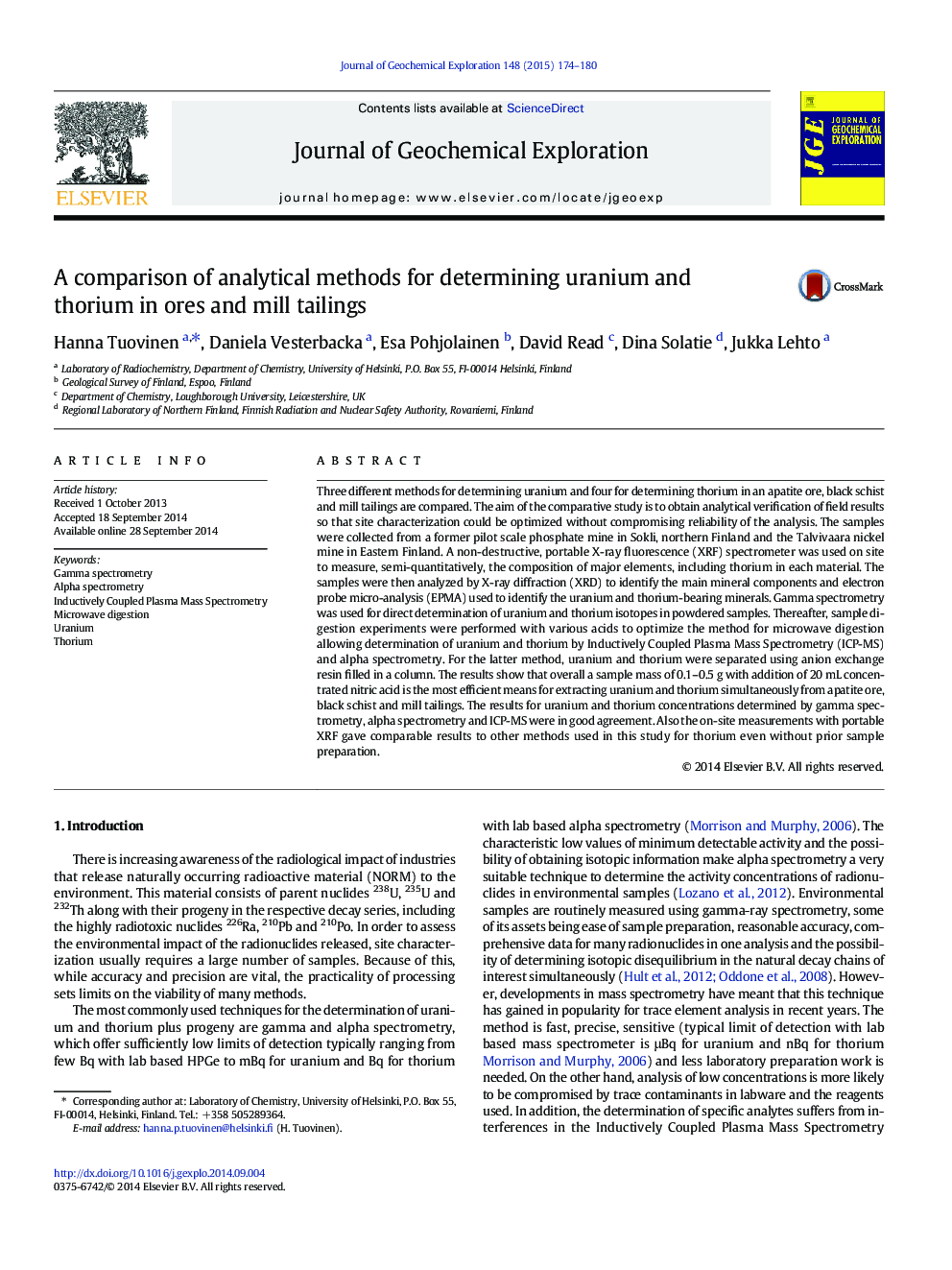| کد مقاله | کد نشریه | سال انتشار | مقاله انگلیسی | نسخه تمام متن |
|---|---|---|---|---|
| 4457323 | 1620911 | 2015 | 7 صفحه PDF | دانلود رایگان |
• Methods for determining U and Th from ore and mill tailings are compared.
• Sample preparation using different mineral/acid combinations is reported.
• The effect of the mineral composition to the results is discussed.
• Nitric acid was the most efficient for extracting uranium and thorium.
• The concentrations determined by three different methods were in good agreement.
Three different methods for determining uranium and four for determining thorium in an apatite ore, black schist and mill tailings are compared. The aim of the comparative study is to obtain analytical verification of field results so that site characterization could be optimized without compromising reliability of the analysis. The samples were collected from a former pilot scale phosphate mine in Sokli, northern Finland and the Talvivaara nickel mine in Eastern Finland. A non-destructive, portable X-ray fluorescence (XRF) spectrometer was used on site to measure, semi-quantitatively, the composition of major elements, including thorium in each material. The samples were then analyzed by X-ray diffraction (XRD) to identify the main mineral components and electron probe micro-analysis (EPMA) used to identify the uranium and thorium-bearing minerals. Gamma spectrometry was used for direct determination of uranium and thorium isotopes in powdered samples. Thereafter, sample digestion experiments were performed with various acids to optimize the method for microwave digestion allowing determination of uranium and thorium by Inductively Coupled Plasma Mass Spectrometry (ICP-MS) and alpha spectrometry. For the latter method, uranium and thorium were separated using anion exchange resin filled in a column. The results show that overall a sample mass of 0.1–0.5 g with addition of 20 mL concentrated nitric acid is the most efficient means for extracting uranium and thorium simultaneously from apatite ore, black schist and mill tailings. The results for uranium and thorium concentrations determined by gamma spectrometry, alpha spectrometry and ICP-MS were in good agreement. Also the on-site measurements with portable XRF gave comparable results to other methods used in this study for thorium even without prior sample preparation.
Journal: Journal of Geochemical Exploration - Volume 148, January 2015, Pages 174–180
